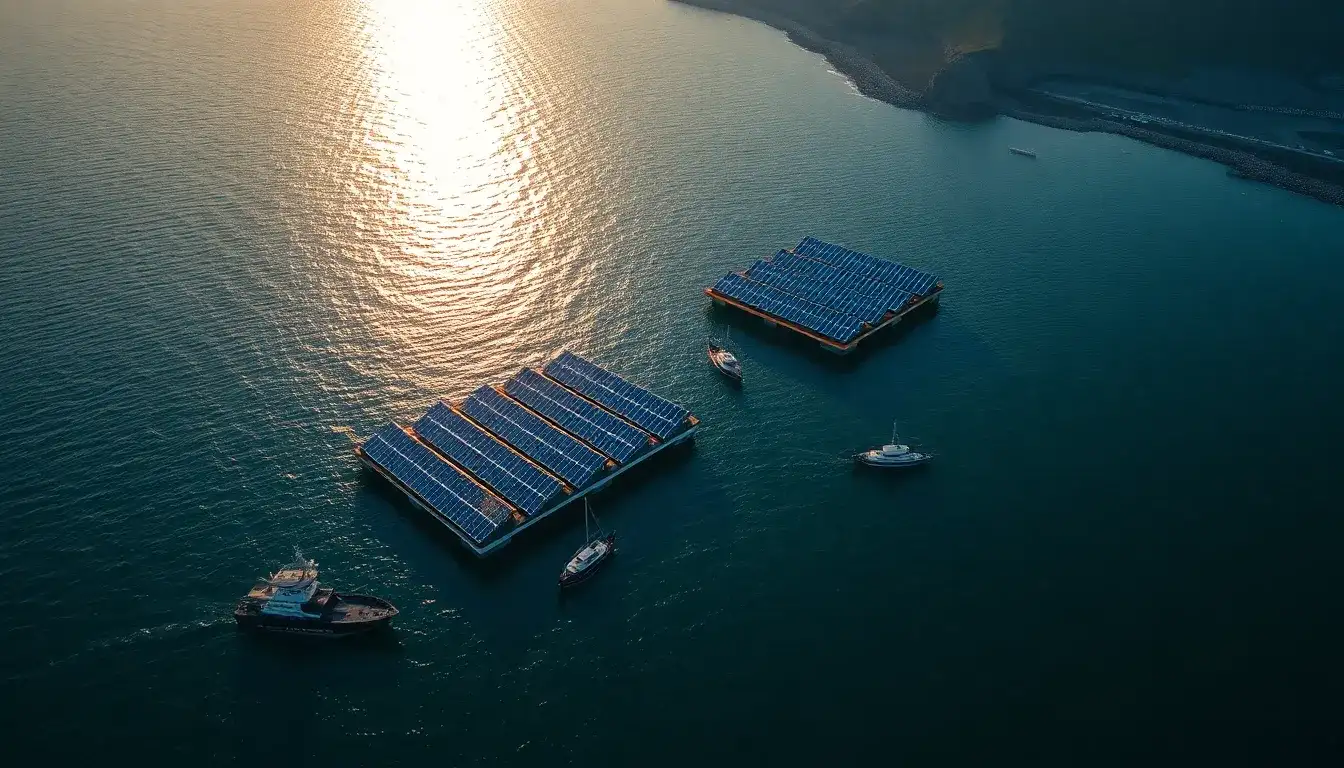
The Beauty of Deep Blue: Pursuing Light from the Sea!
Source: Electric Power Construction New Energy Company
Photographer: Yang Xuemei
Date: March 18, 2025
The construction of the Qingdao Jimo Offshore Photovoltaic Project by China Electric Power Construction Group is well underway. This project is notable for being the first offshore fixed photovoltaic project in China that integrates fisheries. By utilizing an innovative “fishing + photovoltaic” model, it aims to make efficient use of marine resources.
Located near the Aoshawan sea area in Jimo District, Qingdao, Shandong Province, the project plans to establish a 1.15 million kilowatt pile-based photovoltaic power generation system and introduce various components and systems from the new energy industry chain. The first phase will build 600,000 kilowatts, while the second phase will add 550,000 kilowatts.
This sea area is classified as a Class II solar resource zone in China, characterized by abundant solar energy, flat terrain, and a uniform landform, making it conducive for solar power station construction. The power station will employ a model that combines offshore power generation with underwater aquaculture. It is expected to provide approximately 1.92 billion kilowatt-hours of electricity annually, generating an average annual revenue of around 720 million yuan. Additionally, it will result in a reduction of about 1.7 million tons of carbon dioxide emissions each year.
In terms of underwater aquaculture, the project anticipates an annual production of 1,974 tons of sea cucumbers through net cage farming, along with 420 tons of red conch utilizing a multi-nutritional ecological bottom-sowing method.
According to reports, the main construction of the onshore booster station for the first phase is nearly complete, with expectations of achieving initial grid-connected power generation soon. Once the first phase is operational, it is projected to generate approximately 1.07 billion kilowatt-hours of green electricity annually, saving around 327,000 tons of standard coal and reducing carbon dioxide emissions by about 871,000 tons.
Unlike terrestrial photovoltaic projects, the construction of offshore photovoltaic installations requires assembling the solar panels and supports onshore prior to transporting them to the sea via tugboats for installation. Each photovoltaic platform is as large as five standard basketball courts and necessitates the installation of 1,664 photovoltaic steel platforms.







